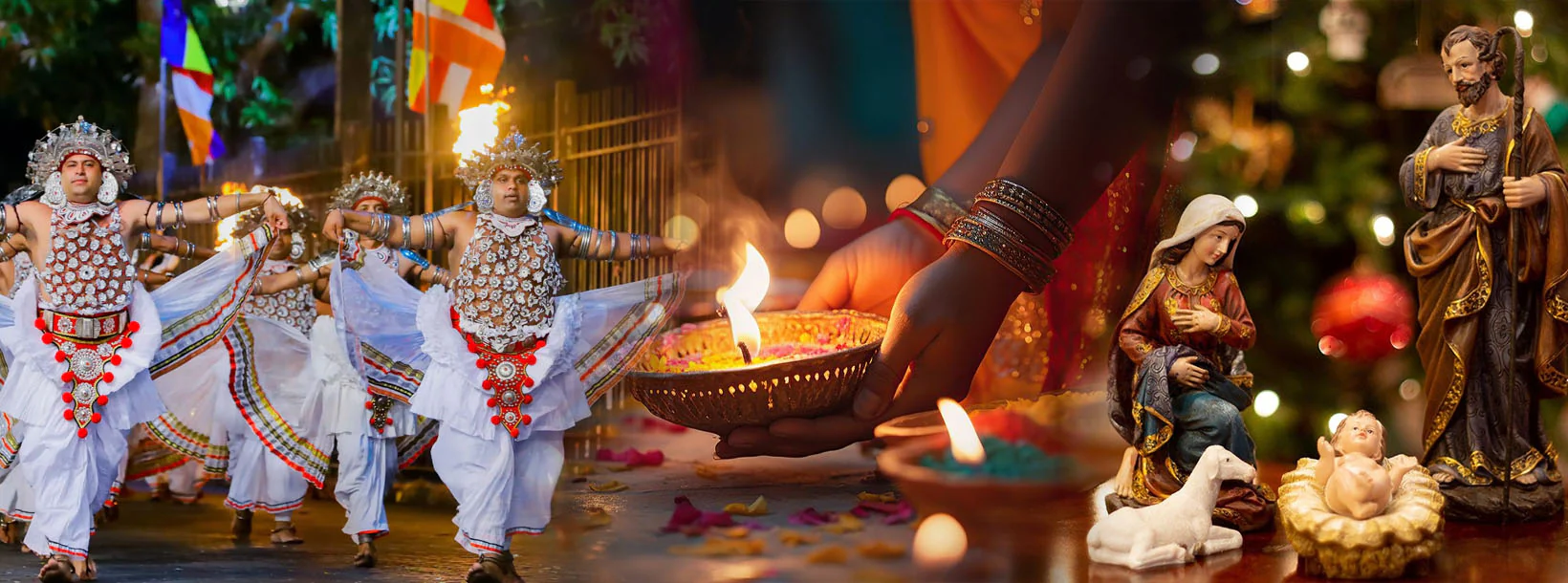
Religious Events
Religious events in Sri Lanka reflect its rich cultural tapestry, with festivals celebrated by Buddhists, Hindus, Christians, and Muslims. Key events include the Buddhist Vesak, Hindu Thai Pongal, Christian Easter, and Muslim Ramadan. These celebrations feature vibrant rituals, processions, and community gatherings, offering a unique glimpse into Sri Lanka's spiritual heritage and its harmonious blend of diverse traditions.
Thai Pongal (தைப்பொங்கல்)
Celebrated on an auspicious day of the month of Thai in the Tamil traditional calendar, Thai Pongal in Sri Lanka is held between the days of January 13th and 16th in the Western Calendar year. Dedicated to Surya the Sun God in Hinduism the festivities involves visiting temples, feasting at home, visiting relatives and handing out gifts, making it one of the most cherished festivals among the Tamil community.
Thai Pongal marks the beginning of the six month period during which the sun moves northward relative to the equator from its southernmost end. A new clay pot filled with fresh milk is boiled to mark the beginning of festivities while it is considered a sign of good fortune when the milk boils over. ʺPongalʺ means to boil or to overflow. Then sweet rice is prepared, which is dedicated to the sun deity and then consumed by families and relatives as the festivities begin. The rice is boiled in milk along with loads of jaggery, raisins, cashews and spices while the cooking is done outdoors in the sunlight, such as a courtyard. The cooking pot which is made of clay is usually adorned with colourful patterns. The rice is usually served on banana leaves.
The following day the cattle who help farmers work their rice fields are honoured. They are considered a major source of wealth to many Sri Lankans since they provide milk in abundance, fertilizer as well as transportation aid besides just labour in the fields. On this day, animals are given thorough baths and beautiful garlands are hung about their necks and their horns.
If you choose to travel to Sri Lanka during a holiday such as Pongal, then there will be much to enjoy and indulge in as the locals embrace their traditions.
- There are many festivities conducted by hotels and stately organisations where you can attend and witness the Tamil culture and cheerful atmosphere. From eating festive sweet rice to watching traditional song and dance shows to firework displays, celebrations are carried out in abundance.
- If you tour the streets of Colombo or even other districts such as Jaffna and Vavuniya, chances are you will see beautifully decorated homes. They use banana, mango and coconut tree leaves while floors are decked out with colourful patterns of coloured rice flour. Oil lamps are lit while there will be crowds gathered around temples to invoke blessings.
- You can indulge in some genuine Sri Lankan cuisine that is made especially for this occasion. Beside the sticky and ever so sweet Pongal rice, you can taste authentic spicy curries such as chicken, goat, fish, and pickled vegetables and fruits along with traditional sweet meats.
There is always a beautiful part of learning a new culture that is foreign to you and visiting a country during a festival, we believe offers you the chance to experience its traditions and culture a bit more.



















